Set Review ➟ 71822 LEGO® Ninjago Dragons Rising™ Source Dragon of Motion
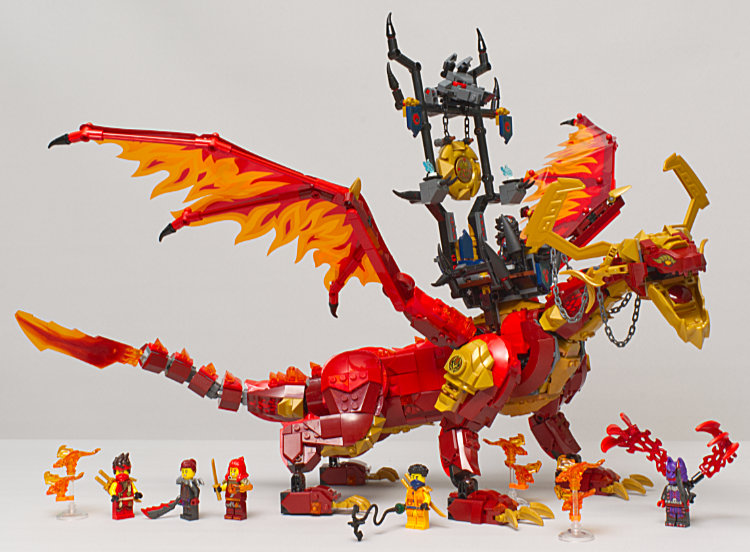
The Source Dragon of Motion is one very, very big, very red, very heavy, very beautiful dragon. However, there is a certain irony in this model being called the “Source Dragon of Motion” and it being a model where its viable range of motion is fairly restricted. And in case anyone is wondering, I tried to get the dragon to sit like a dog just to see if it could, and it can’t. The model’s center of gravity is near the wings and the front legs are too short or otherwise incapable of extending to support the upper body, so the body ends up top heavy and does a face-plant. I’m sure you will be able to sleep better now that you have been imparted with that knowledge.
I will start this review with a couple mundane notes. As with the 71820 Temple set, this set’s box is a tray-and-lid assembly. Unlike the Temple set which was absolutely full, this box was at least one quarter empty.

The plastic sheet for the dragon wings was loose in the bottom of the box, had one corner folded over on itself, and had noticable scuffs to show for it. I don’t know why this sheet was not placed in the cardboard envelope with the instruction manuals and the stickers as it would have fit.
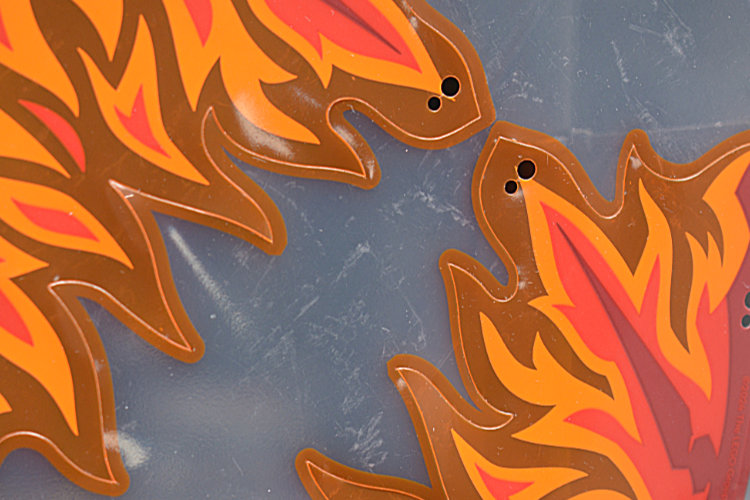
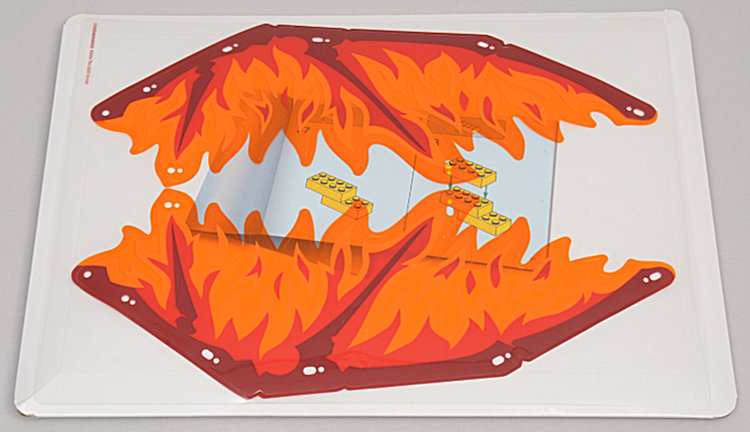
Another curiosity was the manuals themselves…five small books instead of one large book. Undoubtedly there was a reason for going with five small books, but then putting them in a large cardboard envelope instead of a container of a more appropriate size…like one of the parts bags…while leaving the appropriate-sized wings out…it’s a head scratcher. By means of comparison the Monkie Kid Nine-Headed Beast 80056 set—which is essentially another dragon with sheet plastic wings—has the wings come inside the cardboard envelope with stickers and instructions and those wings had no scuffs. And with that, we’re on to Cincinnati.
The six minifigures in this set, Kai, Kas, Wolf Mask Warrior, Arin, Wyldfyre, and Jordana all appear in other sets in the current series…no unique figures or parts here.
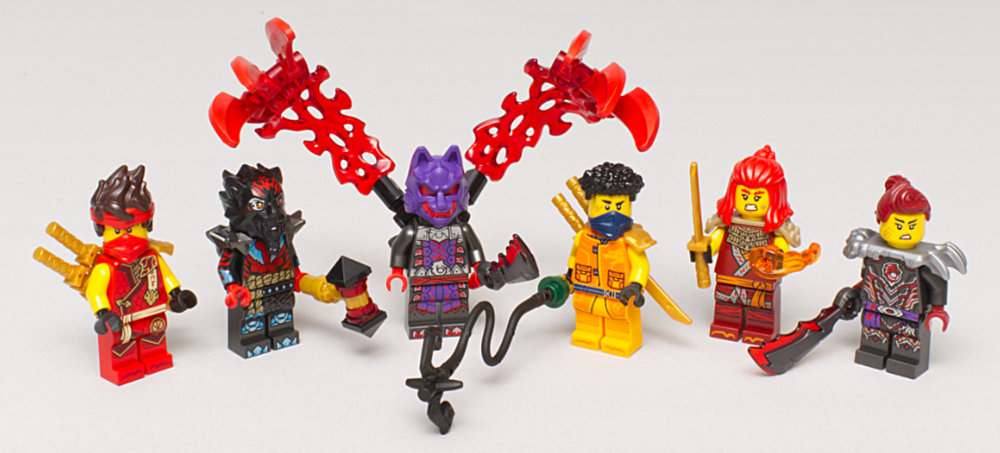
There are six part 5502 one-piece dragons in transparent orange (other sets in this wave have the part in pearl gold), and they really give off the vibe of being little flame dragons. This perception is enhanced by the vast size difference between the little dragons and the big one.
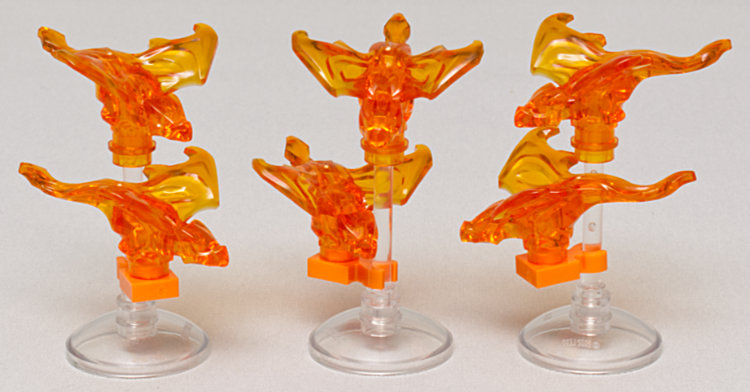
The last non-dragon part of the set is a rather tall, rather evilly elegant throne featuring a lot of spiky bits, a wolf head, a large gong, and some pots of blue flame.
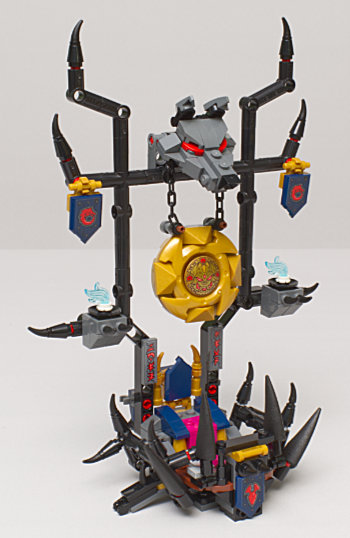
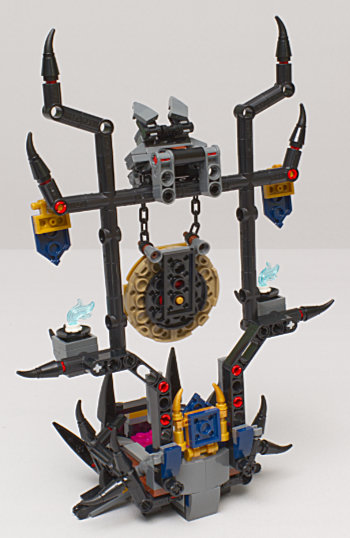
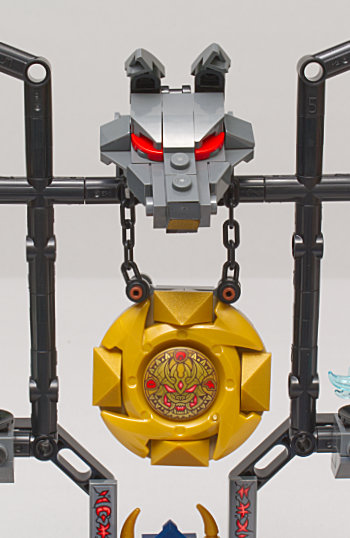
The throne could almost be considered to be taller than the dragon. If the dragon wings are down and dragon horns are discounted…that is to say if the dragon is in a kind of neutral stance, the there is negligible difference in height.
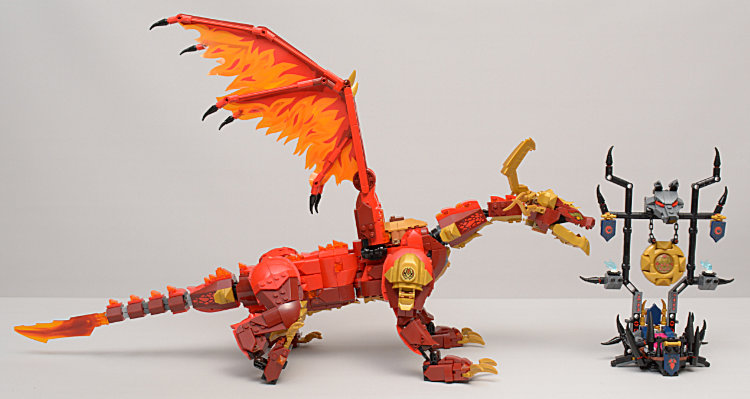
The throne can be used as a seat or saddle attached to the dragon. It is a bit clumsy when being used attached to the dragon as it is quite tall; you have to work around it to position the dragon. The throne might be knocked off fairly easily because it is top heavy, but to mitigate that happening there are a couple side clips in the build which help secure the seat to the dragon.
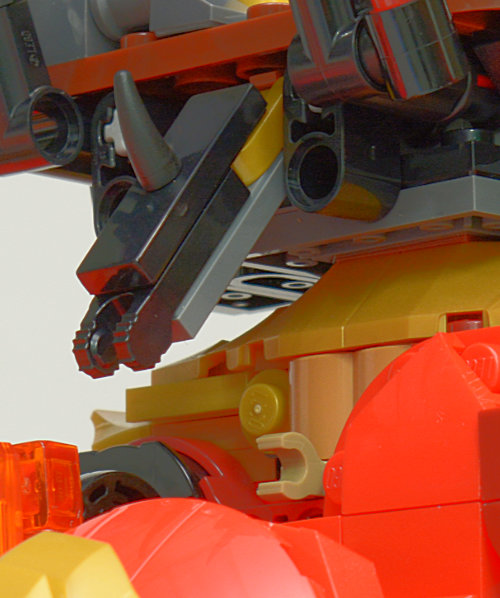
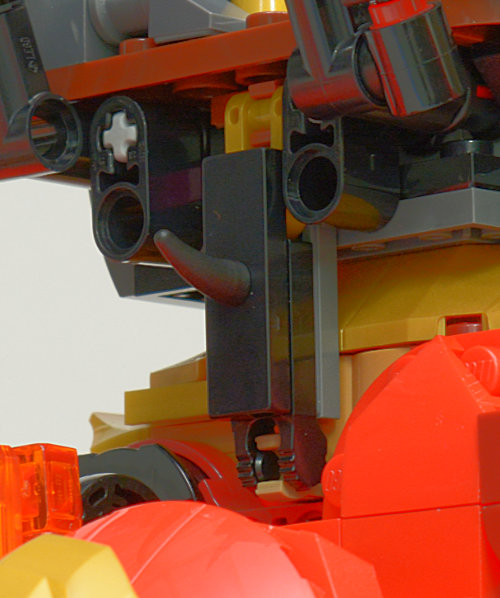
When attached to the dragon, the throne tends to cant back a bit because the dragon’s front legs and back legs are different heights. So, while it is very cool looking the throne is impractical as a saddle as it would obviously get knocked off or break or make a gong sound if the dragon wanted to fly underneath a bridge or a cloud or anything.

Now we get to the dragon. The dragon is undeniably “wow”. As the size is truly impressive, I will start with some comparison images. First is the dragon compared to the Orient Express.

Dragon compared to the Tournament Temple.


Dragon compared to Lloyd’s Legendary Dragon.

Regarding articulation, the model makes use of technic rotation joints at the dragon’s torso, wings, hips, shoulders-to-neck, and tail-to-torso. Pairs of small ball-and-socket joints connect the smaller tail sections to one another. Large ball-and-socket joints connect the feet to the ankles and the section of the neck behind the head to both the head and the section of neck connected to the shoulders. Bar-and-clip hinges are used for the toes and the jaw. The technic joints are sturdy and reliable, the small ball-and-sockets are mostly reliable, the large ball-and-sockets are not up to the task because the model is just too heavy. The bar-and-clip hinges are easy to position and generally stay where they are put either intentionally or not.
The technic connection where the tail meets the dragon’s butt offers 360 degrees of rotation on the x-axis and four positions on they y-axis. While the 360 is more than necessary (and probably more than actually desirable as it can be positioned effectively upside-down) some rotation at the base can assist in creating some dramatic tail poses.
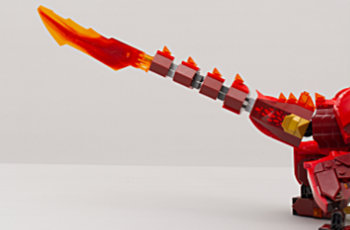
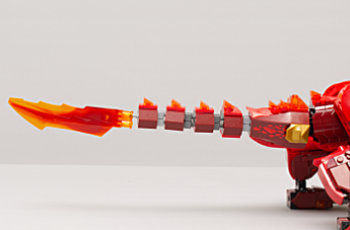
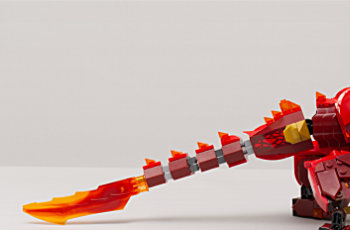
There are sufficient segments of tail connected by the ball-and-sockets to achieve a full 180 degree U-turn of the tail. The blade at the end of the tail is simply friction fit onto a single bar and can be rotated 360 degrees. I will note that several times while positioning the tail one of the little balls somewhere in the series would pop from its socket. The tail would remain together as the other ball-and-socket in the pair held, but apparently it does not take too much vertical stress to pop one or the other in a pair.
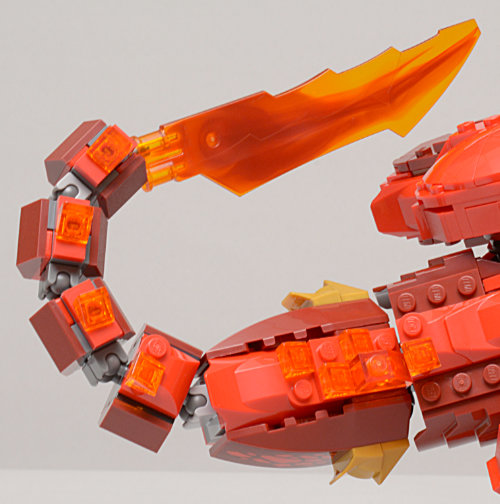
While theoretically the hips and shoulders should be able to rotate 360 degrees the model has stops in place to prevent this. The hips can be set to four positions—five if the tail is turned sideways—while the shoulders can be set to ten positions. And while the shoulder can be set to be nearly straight forward or straight backward, relative positions of the wings and the shoulders can interfere with one another.

Rear leg, backmost position.
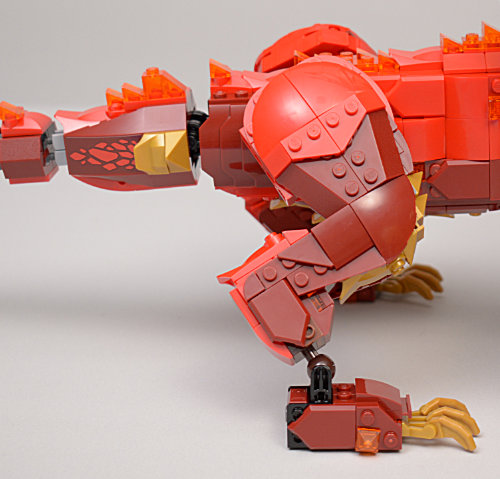
Rear leg, frontmost position.
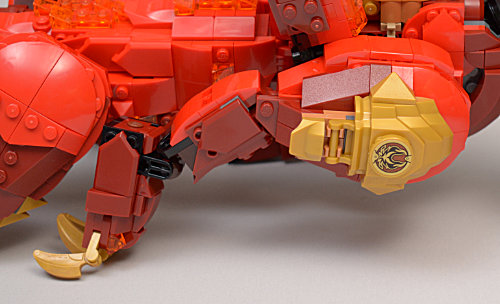
Front leg, backmost position.

Front leg, frontmost position.
Coincidentally while the technic assembly could allow the legs to swing out at the side this motion is also prevented by design. The front legs are fixed a click or two off 90 degrees away from the torso and the back legs are fixed a click or two more which gives the dragon a slightly more lizard-like stance as opposed to a horse-like stance. I think it makes the dragon look a bit more menacing that it would with straight up-and-down legs.
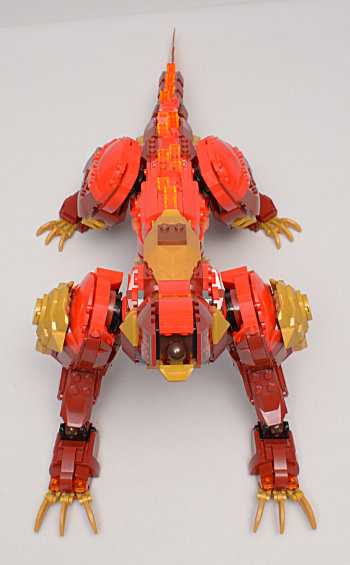
Elbows and knees are fixed as is most often the case with LEGO creature and mech models. While I would always prefer more articulation to allow for a greater variety of poses I’m sure there is a trade-off here with aesthetics.
The feet make use of the rubber infinity-symbol-shaped Technic double axle connector as skid stops. I have previously seen small tires used for this purpose in mechs but this is the first time I have seen these rubber pieces used on the feet of anything. They do squish sufficiently as to not be a particular hindrance to the feet laying flat…which is undoubtedly also due to the weight of the model.
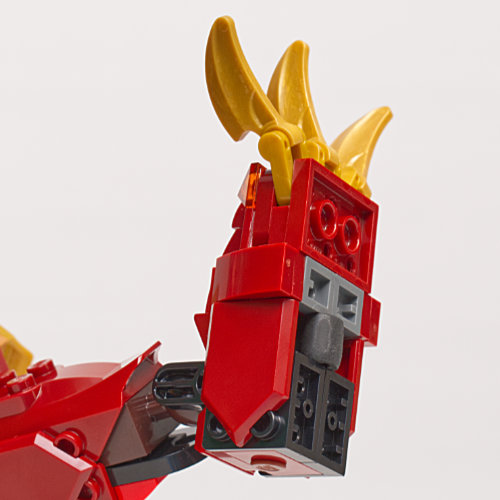

Part choices limit the toes on the back feet to fixed positions while the front toes can be set either close together, splayed far apart, or anywhere in between.
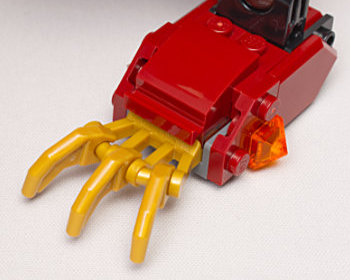
Back foot toes.
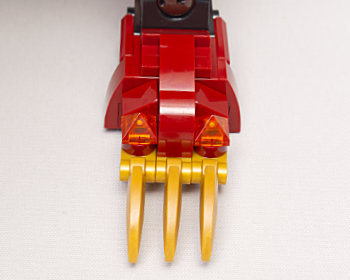
Front foot toes together.
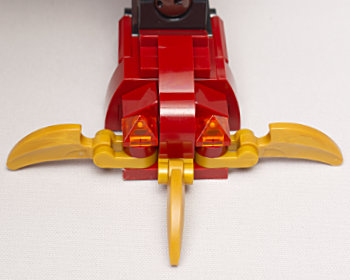
Front foot toes apart.
The ankles. Holy cow. I suspect the choice to use ball-and-sockets for the ankles was due to the outward splay of the legs as described earlier. The ball-and-socket allows for various indeterminate and unspecified angles which would allow the feet to lie flat on the ground. But the solution to that problem is the cause of others. First is the weight of the model. The ball-and-socket assembly simply does not have enough friction resistance to support the model’s weight. They are adequate for the most part if the force is more or less straight down.
But then…
There is a design consideration—a plate behind the ball—that prevents the front feet from moving fully toes down. If you think of the feet as hands on a keyboard, the hands can bend at the wrist and point up to the ceiling but not down to the floor. This becomes an issue particularly if a front leg is rotated forward—the foot then cannot lie flat on the ground. But because the ankle can pivot forward it will and you get the back of the heel flat on the ground with toes pointed at the shoulder.

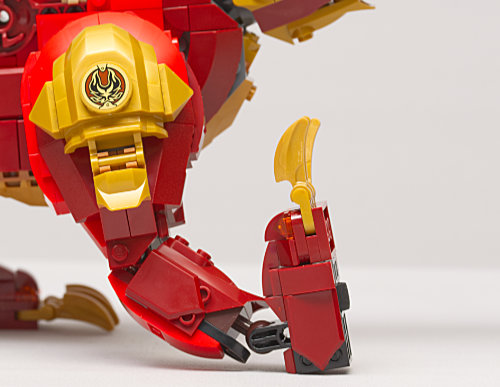
The back feet have no constraints on how they can be positioned (within the limits of the ball-and-socket construction) and they can end up with toes pointed at the knee among other wacky positions. While this freedom of movement could be considered beneficial, the limitation of the hip movement means that the model really can’t take advantage of it. I could go on for several paragraphs describing the problems with the ankles, but I’m just not that ambitious at the moment. Bottom line is that the ankles are about as good as Deadpool’s wrists after he punched Colossus. Well, maybe not that bad, but you get the point.
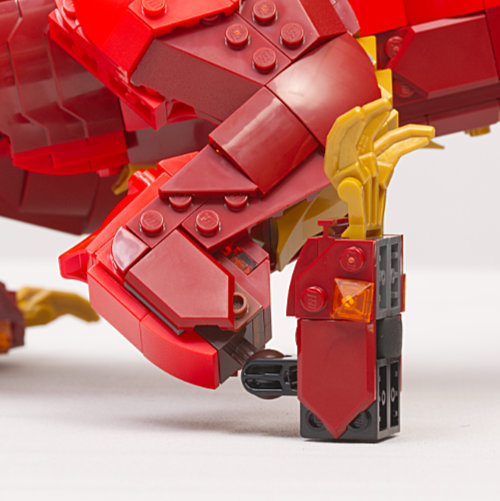
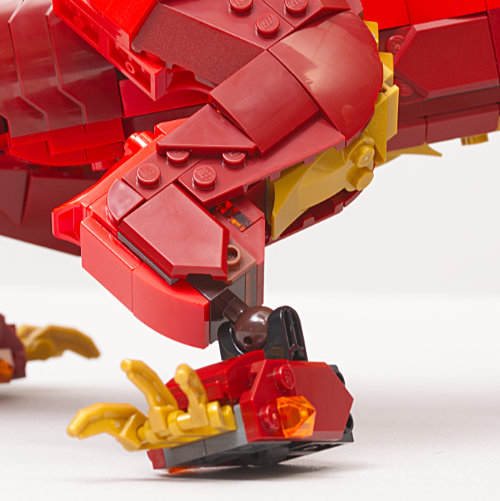
Rotation joint assembly in the body allows for some side-to-side movement at the mid torso.
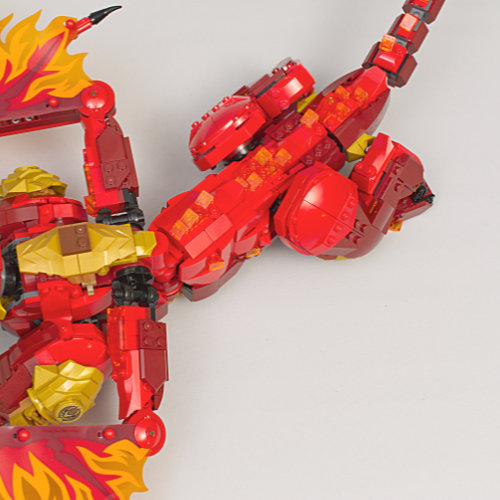
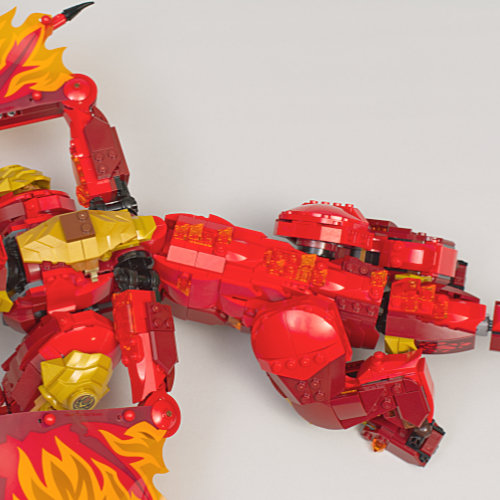
The wings are able to rotate 360 degrees at the shoulder, but do have relative positional interference problems with the shoulders. So while the wings can be in a multitude of positions I don’t know why that is necessarily desirable or worth the effort.
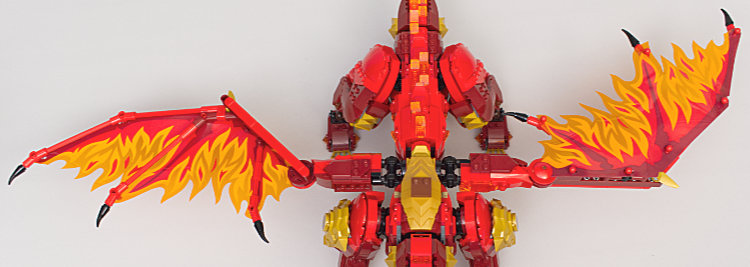
The wings can also “flap“ from fully straight up (without the throne attached) to almost fully straight down provided the shoulder is not in the way. The dragon will need to be elevated far off the ground for the wings down position to be effected.
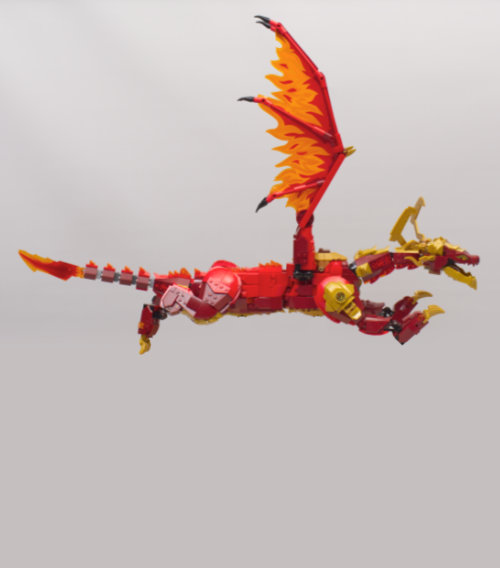
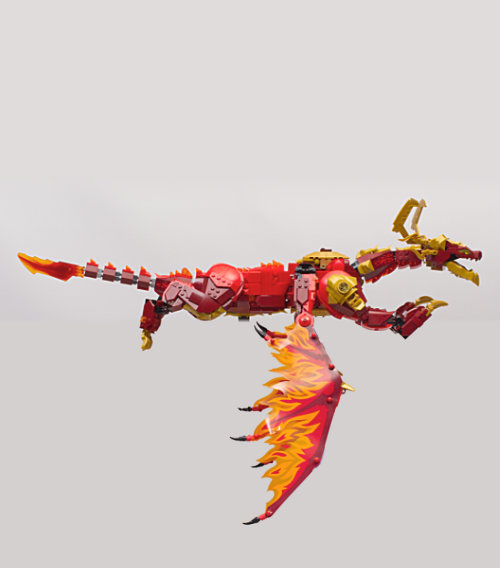
Rotation joint assembly at the “elbow” of the wings also allows for nearly 180 degrees of movement.
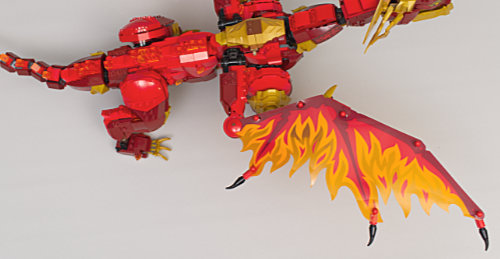
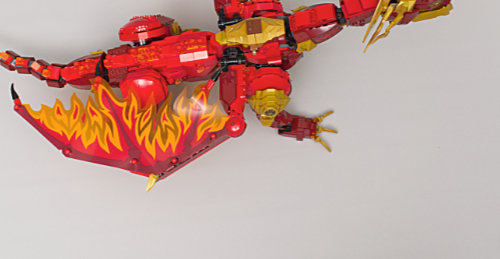
The neck is limited in range of up-and-down movement at the shoulders to two positions. The ball joints at mid-neck and behind the head allow for greater range. Unfortunately the upper neck and head assembly is sufficiently heavy that the mid neck ball-and-socket can’t support the weight and invariably, eventually, and usually quickly, settles into its most downward position. Design stops do not allow for the head and neck to go down past the shoulders so the dragon cannot stop at a river for a drink of water or nibble on minifigures that may be under its head.
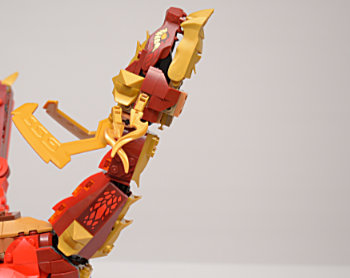
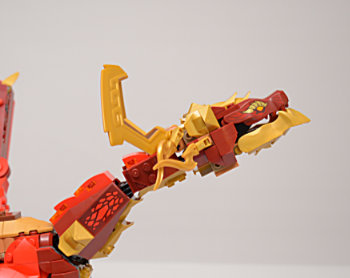

Neck rotation at the shoulders is a full 360 degrees with the Technic rotation joint. Mid-neck rotation of the ball-and-socket is limited by design to rotation of about 90 degrees. Mid-neck and head pivot is constrained by the socket position. Altogether side-to-side pivot is about 90 degrees. Ball-and-socket assembly at the head allows for 360 degrees of rotation.

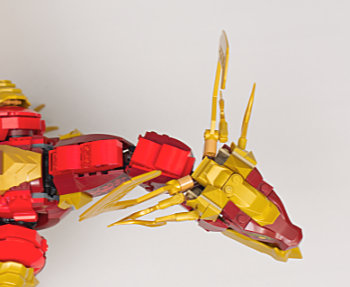
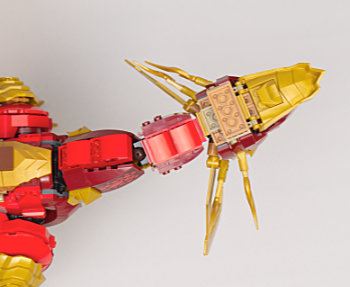
The Randolph T. Fielding Absolutely Administriva Section
Head piece for Kai is part number 3626 while Arin, Wyldfyre, Jordana, and the Wolf Mask Warrior use part number 3274.
Old parts, new colors
65765 in red, 44224 in dark red and 76795 in dark red.
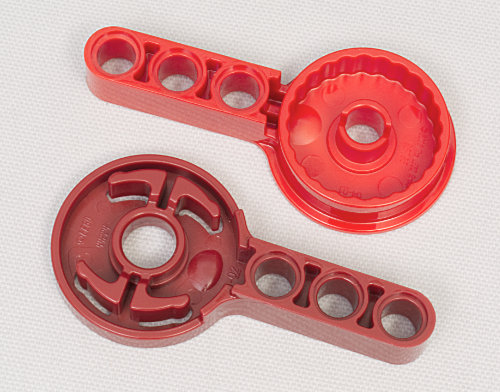
65765 and 44224
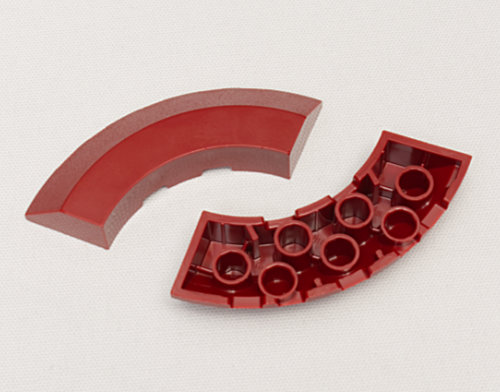
76795
73901 in red, 1745 in red, and 42156 in dark red
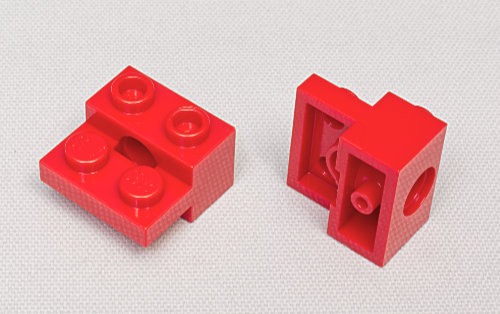
73901
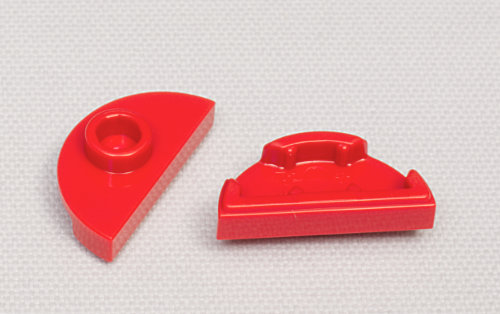
1745
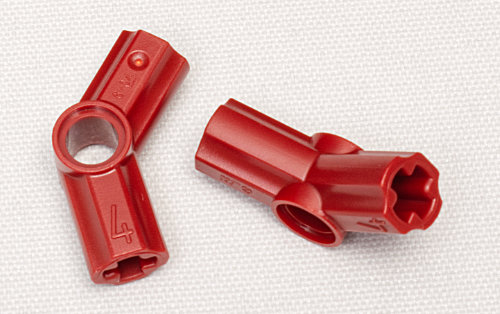
42156
28326 in dark red, and 72362 in dark red with a new print.
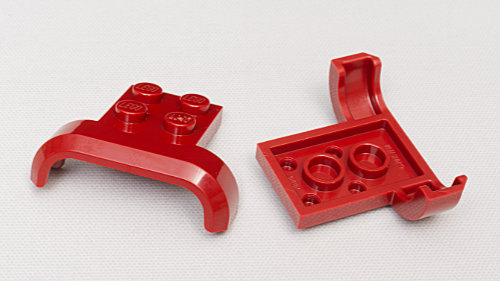
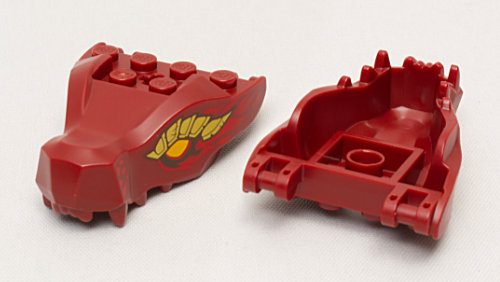
79895 with a split font dark red and transparent orange.
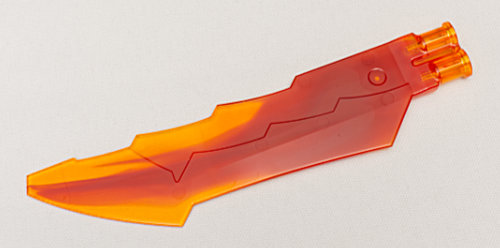
Summary
The build is more interesting than some with its various technic and SNOT elements and a few atypical assembly instances. The absolutely exquisite dragon design suffers from the inadequacy of the ball-and-socket joints and really seems too heavy for play. It is exemplary as a display piece provided you can manage the shortcomings of the ball-and-sockets and are satisfied with limited options when it comes to leg and neck positions.
Disclaimer
Thanks to LEGO for kindly providing the set for review.
33633